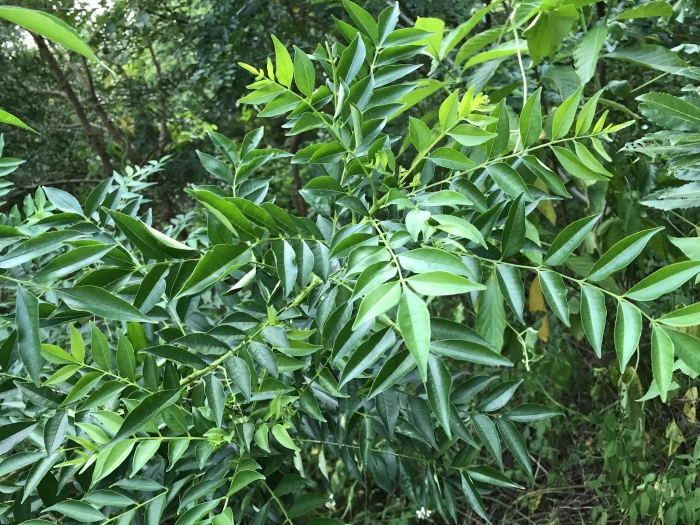Toothache Tree
(Zanthoxylum avicennae)
Toothache Tree (Zanthoxylum avicennae)
/
/

lansan
CC BY 4.0
Image By:
lansan
Recorded By:
Copyright:
CC BY 4.0
Copyright Notice:
Photo by: lansan | License Type: CC BY 4.0 | License URL: http://creativecommons.org/licenses/by/4.0/ | Rights Holder: lansan | Publisher: iNaturalist | Date Created: 2019-09-09T17:35:47-07:00 |

























Estimated Native Range
Climate Requirements for Lehi, Utah
| This Plant | Your Site | Plant Suitability for Your Location | ||
|---|---|---|---|---|
| • Precipitation | 13" - 122" | 16" | Your precipitation may be insufficient for this plant. Irrigate N" / year. | Irrigate N" / year |
| • High Temp. | 62°F - 97°F | 91°F | Your summer temperatures are normal for this plant. | Excellent |
| • Low Temp. | -4°F - 73°F | 17°F | Your winter temperatures are normal for this plant | Excellent |
This plant should grow well at your location with about N inches per year (Y minutes per month) of irrigation.
Summary
Zanthoxylum avicennae, commonly known as Toothache Tree, is a deciduous tree native to a variety of habitats including limestone hills, mixed forests, and along riverbanks in southern China, the Philippines, Northern Vietnam, and Taiwan. It can grow up to 50 feet tall and is characterized by its thorny trunks and branches, which serve as a defense mechanism against herbivores. The tree is notable for its pinnate leaves and clusters of small, inconspicuous flowers that bloom in the spring. The bark and fruits of Zanthoxylum avicennae are used in traditional medicine and as a spice in culinary dishes.
Toothache Tree is valued for its unique appearance, with the thorns adding textural interest to gardens. It is sometimes used as a barrier plant due to its thorny nature. In cultivation, it prefers full sun to partial shade and requires well-drained soil. It is drought-tolerant once established, making it suitable for xeriscaping. However, gardeners should be cautious as the thorns can make maintenance challenging. Zanthoxylum avicennae is potentially invasive in some parts of the world, and its aggressive root system can cause problems if not managed properly. Before growing it outside of its native range, please check to see if it is invasive in your area.CC BY-SA 4.0
Toothache Tree is valued for its unique appearance, with the thorns adding textural interest to gardens. It is sometimes used as a barrier plant due to its thorny nature. In cultivation, it prefers full sun to partial shade and requires well-drained soil. It is drought-tolerant once established, making it suitable for xeriscaping. However, gardeners should be cautious as the thorns can make maintenance challenging. Zanthoxylum avicennae is potentially invasive in some parts of the world, and its aggressive root system can cause problems if not managed properly. Before growing it outside of its native range, please check to see if it is invasive in your area.CC BY-SA 4.0
Plant Description
- Plant Type: Shrub
- Height: 10-20 feet
- Width: 6-12 feet
- Growth Rate: Moderate
- Flower Color: Green
- Flowering Season: Spring
- Leaf Retention: Deciduous
Growth Requirements
- Sun: Full Sun, Part Shade
- Water: Medium
- Drainage: Medium
Common Uses
Edible*Disclaimer: Easyscape's listed plant edibility is for informational use. Always verify the safety and proper identification of any plant before consumption.
Natural Habitat
Limestone hills, mixed forests, and riverbanks in southern China, the Philippines, Northern Vietnam, and Taiwan
Other Names
Common Names: Avicenna Prickly Ash
Scientific Names: Zanthoxylum avicennae, Fagara avicennae, Fagara pterota, Nothopanax anisum, Panax anisum, Polyscias anisum, Zanthoxylum avicennae subsp. tonkinense, Zanthoxylum avicennae var. tonkinense, Zanthoxylum avicennae var. touranense
GBIF Accepted Name: Zanthoxylum avicennae